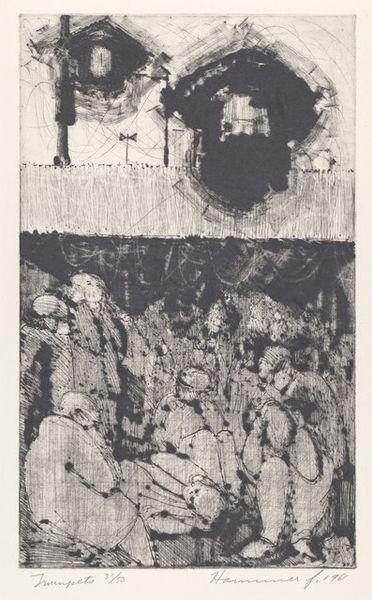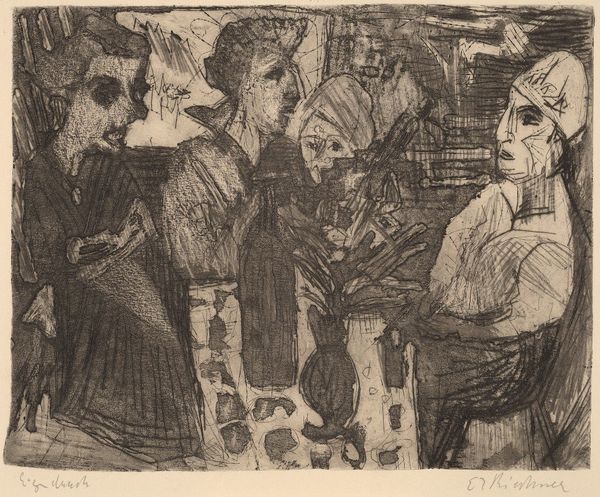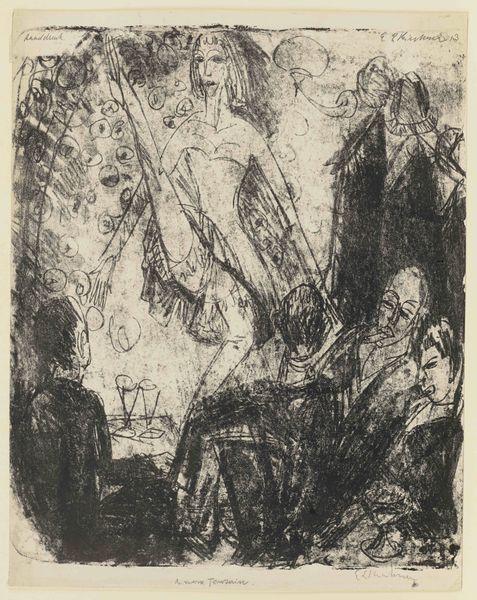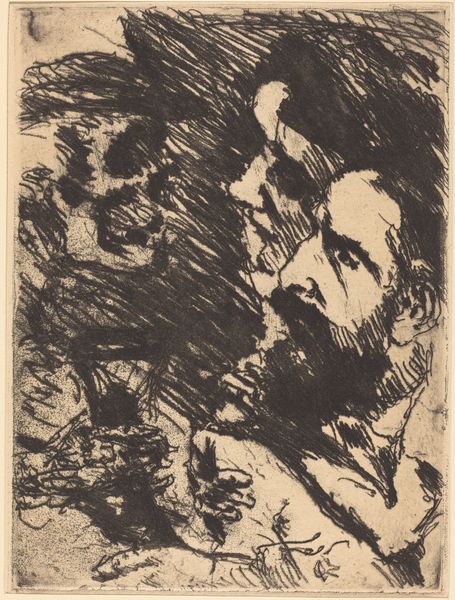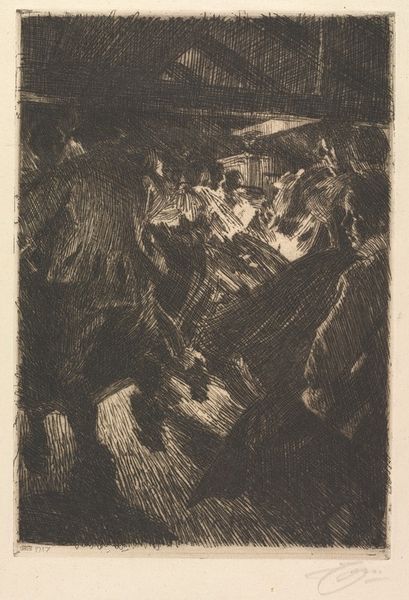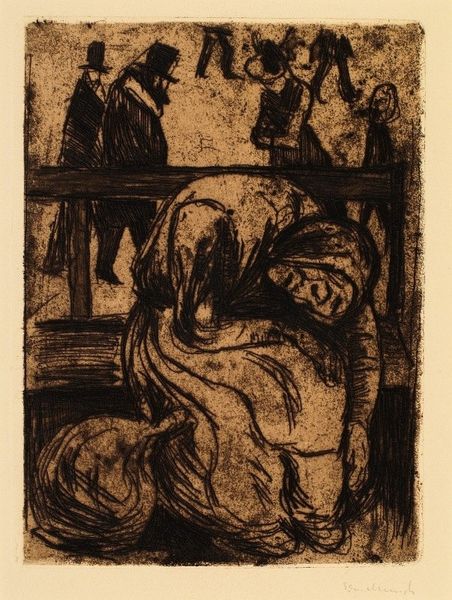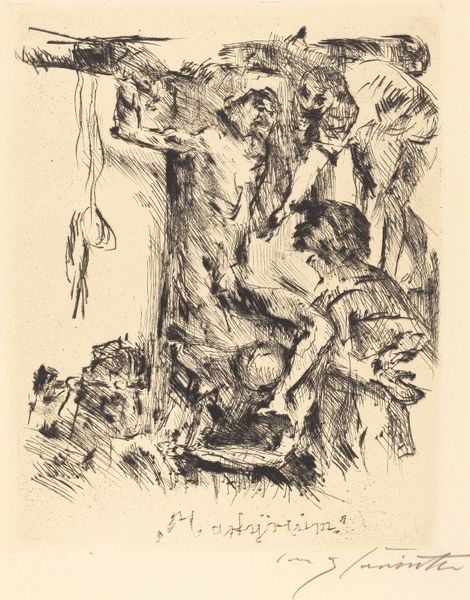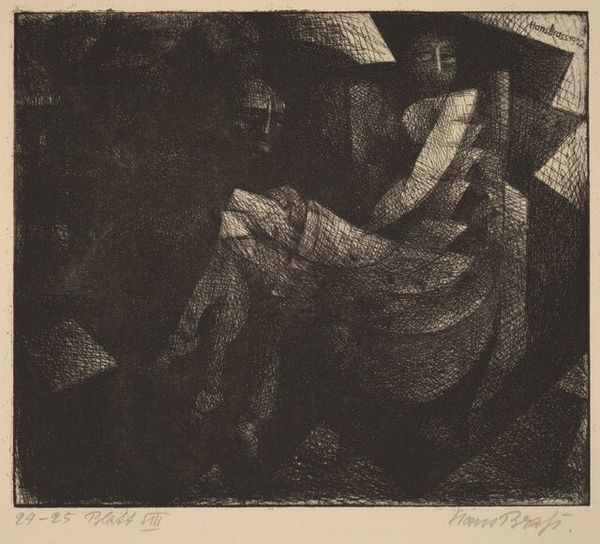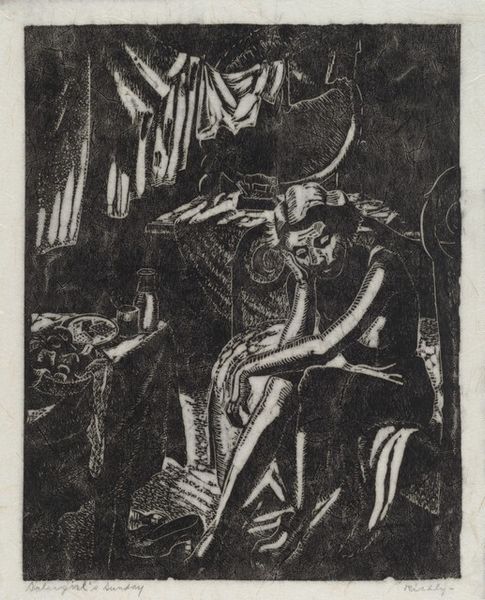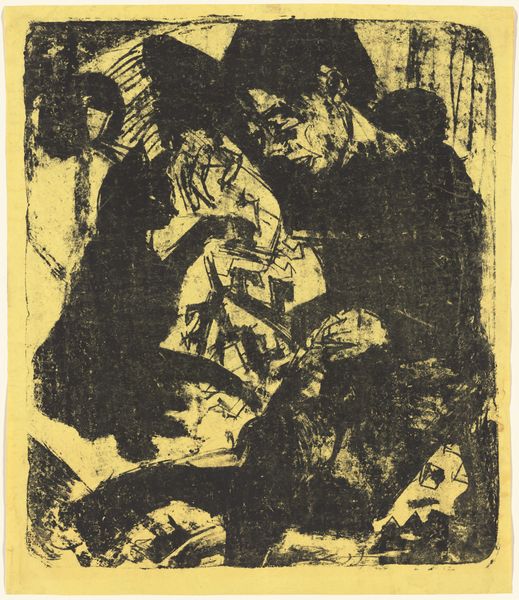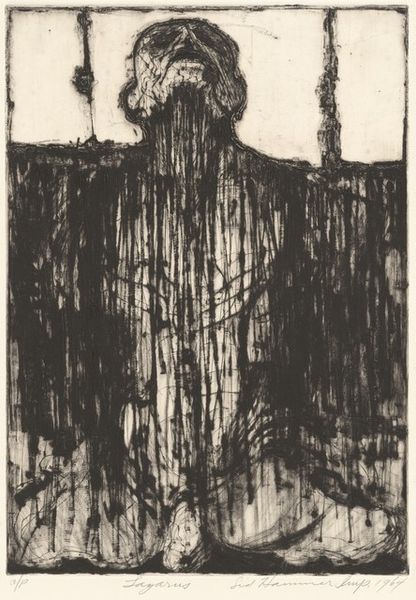
drawing, print, charcoal
#
drawing
# print
#
charcoal drawing
#
figuration
#
charcoal art
#
pencil drawing
#
genre-painting
#
charcoal
#
charcoal
Dimensions: image: 36.2 x 26 cm (14 1/4 x 10 1/4 in.) sheet: 51.6 x 32.7 cm (20 5/16 x 12 7/8 in.)
Copyright: National Gallery of Art: CC0 1.0
Curator: Eva Hesse's charcoal drawing, titled "Subway," was created in 1954. Editor: My immediate feeling is one of oppressive claustrophobia, and alienation, even. The thick, dark lines make it hard to distinguish individual forms. Curator: It’s interesting that you pick up on alienation, given the nature of mass transit. But I wonder about the physical creation of this work, using charcoal in such a bold way—reducing the scene to a series of gestural marks. It's like she's dissecting the experience into its core material components: soot, paper, and pressure. The means of production and making becomes visible and is related to the subject. Editor: Absolutely. For me, the visual density adds to this overwhelming feeling. Those layers of charcoal suggest a multitude, a throng. You almost feel swallowed by a dark tide of faces. And the anonymity seems deliberate; there is a definite symbolic interplay here with Hades realm and its crossing of shadows between distinct territories. Curator: Hades’ realm in 1950s New York? Do you see some symbolic figures or shapes embedded within the shadows that support this analogy? Editor: I can see the vague shape of Charon's boat on the top part. But that can only be confirmed with proper knowledge of Hesse’s inspiration, if she consciously had these symbolic associations in mind during the creation process. Even without explicit reference, the mood and archetypal setting are very potent here, evoking feelings related to transit and death as something inevitable for every person, with its known and unknown destiny for everyone inside the car. Curator: It speaks to her focus on the act of making itself, using those base materials to create this emotionally dense scene, instead of relying upon purely iconic figures. The means she's chosen certainly contribute to the subject. Editor: That’s fair. By deconstructing the image down to these crude materials, the scene attains a kind of archetypal universality regardless of its particular time. A space for psychological transit beyond physical transportation. Curator: Seeing the artwork dissected into means of its construction and manufacture shows its relationship with larger concepts around labor and social circumstances, while simultaneously its iconic content leads the viewer towards universal emotions of mankind that relate directly to the symbolism of an overwhelming crowd of faceless persons. Editor: Exactly, an intense visual meditation, whatever we conclude was Hesse's original intention.
Comments
No comments
Be the first to comment and join the conversation on the ultimate creative platform.
